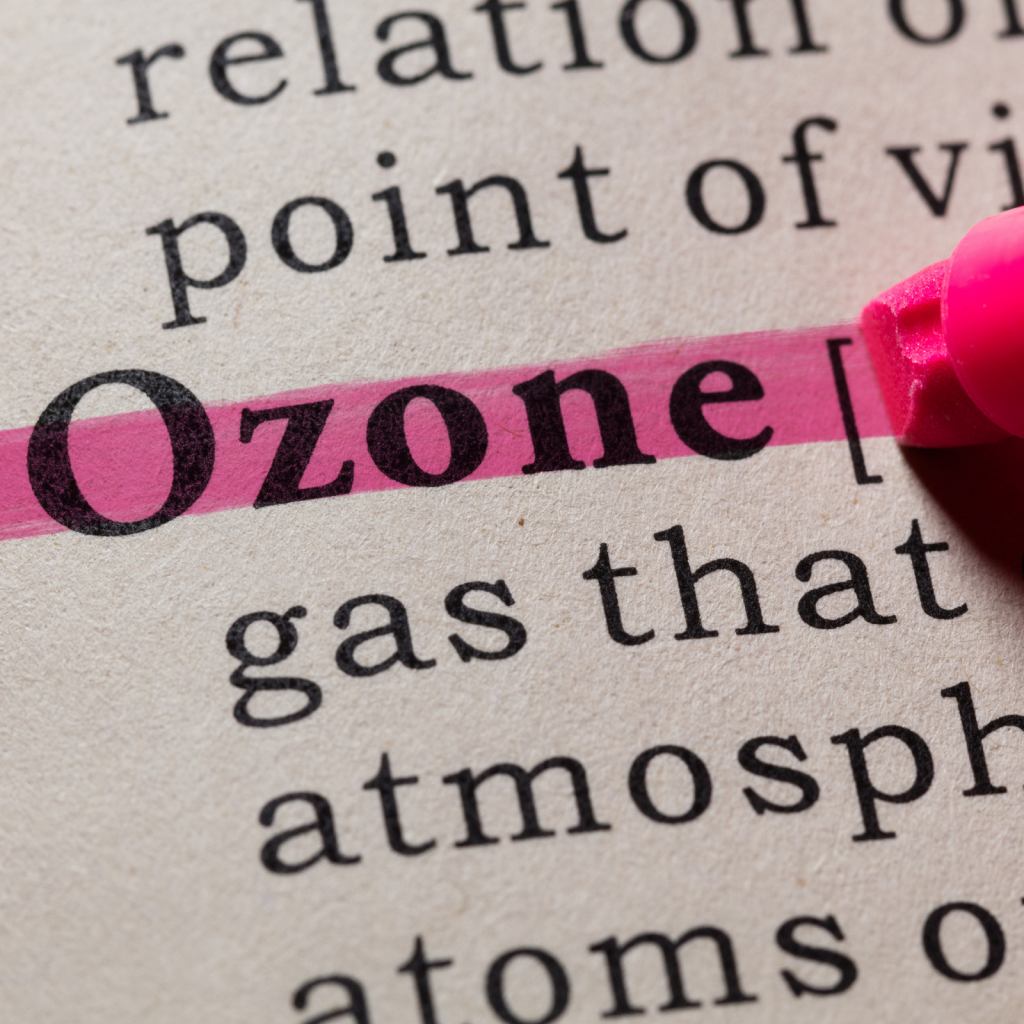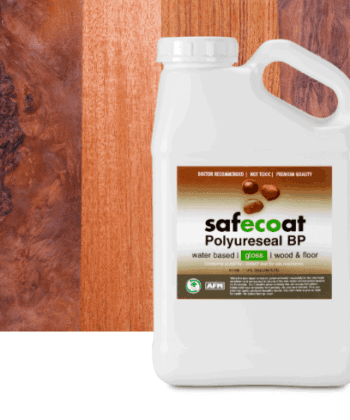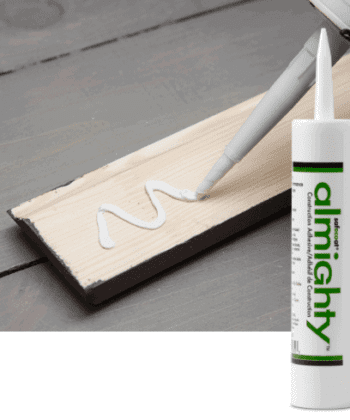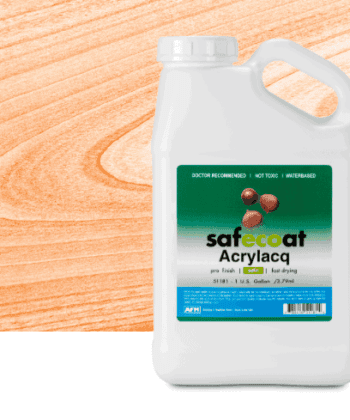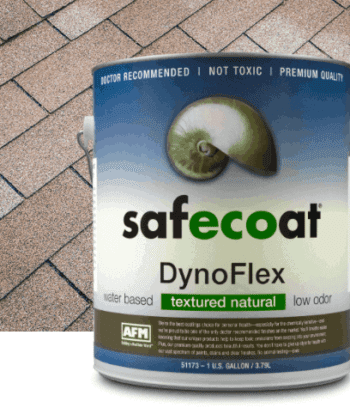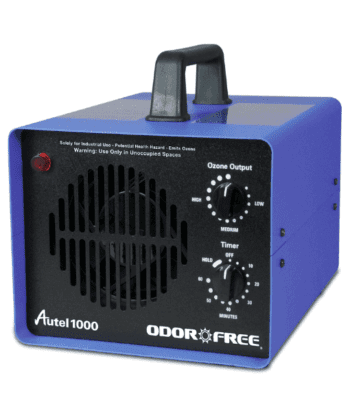NTE Podcast: Ozone Purification
Today we take some time to discuss the advantages and disadvantages of ozone generation for air purification and why you shouldn’t be afraid of it. We also take a few questions from our listeners to help then with their home projects.
iTunes
Spotify
Transcript
Ozone Purification
Andy Pace:
Welcome to the Non-Toxic Environments podcast. My name is Andrew Pace, every week my cohost Jay Watts and I will discuss healthier home improvement, ideas and options. Thank you for finding us and please enjoy the show.
All right, folks. Welcome back to Non-Toxic Environments podcast. This is Andy and Jay. We are talking about a few things today, Jay, first of all, we wanted to get to some customer, and listener Q’s and A’s, questions and the answers.
Jay Watts:
We have some interesting ones today, too. All these are good.
Andy Pace:
I wanted to start out today talking about ozone and this is a topic that I think we all know a little bit about. We hear what we hear on the news and in media and so forth. But you know, I’m specifically referring to the the way we use ozone generation units to purify spaces and in, in the day and age of COVID and we’re all spending more time at home, we’re looking for ways to purify the air in our homes. All right. So I know we had on mid of last year, we had on the technical services manager for Dynamic Air and we talked about air purification systems. It was a great, that was an excellent recording. And we talked about the use of UV lights and carbon and media filtration. What we did not talk about is ozone generation.
Jay Watts:
We have in the past, we’ve not played up. Ozone is a great idea, right? I mean, we’re kind of some there’s some people think it’s great. Other peoples don’t think it’s so great. So we’ve been kind of batting around a little bit. This is an interesting approach here to the discussion.
Andy Pace:
Ozone, as we know it, when we hear about the ozone layer, let’s say up in the way upper atmosphere. This is obviously an unnecessary thing to have the ozone layer and then the holes in the ozone layer open and close due to a variety of reasons. We hear about ozone at more ground level. It’s actually more about ozone that is developed from naturally by our environment. It is created because of pollutants that rise to the atmosphere about six miles up and creates ozone by the combination of VOCs, nitrous oxides and UV, and actually creates ozone to clean itself up, essentially it’s the clean up the mess in the air. And that’s a natural process. Ozone, when it comes to the ozone generation inside somebody’s home is it’s essentially taking the nature’s way of purification and mechanically creating a zone through the process of running an air current across an electrical charge, which splits up the ozone molecule from an O2 to, into singular molecules, O1 essentially. And then they react to each other and create activated oxygen or O3. And I’m going a long way with this because I want people to understand exactly what ozone does now. We’ll talk about the harmful effects in a second. But what ozone does is now ozone is activated oxygen and it’s floating around in the air. Now it’s looking for a home it’s looking to react to something. So ozone typically reacts to pollutants in the air, be it other chemicals, mold, spores, bacteria viruses, and it’s it connects and starts to break down these materials. If ozone cannot react to something in the air, that is a pollutant. It actually has a half-life of about seven and a half minutes. Very soon after it’s produced, it’s so volatile that it starts to react to itself and turns back into pure oxygen. This is where it gets a little dangerous, pure oxygen is not the safest thing in the world to be breathing in, especially if you have allergies, or if you have bronchial disorders, asthma, breathing difficulties. So you want to be careful with the production of ozone in the homes, especially when you have these breathing difficulties. Cause it can actually exacerbate problems. Are you with me so far?
Jay Watts:
Yeah, I am with you. Different thoughts run through my mind. So I think when you were talking about ozone, I think one of the simple connections people have made over the years is to connect it with the idea of smog, ozone and smog. That’s how I always thought when I was younger. It’s like ozone that’s smog. That’s what that means. Not knowing the sophistication of the idea. I guess the other thing too is… well, you’ll continue the conversation, but I’m just wondering if it’s seeking particles or of seeking something to attach itself to, and it’s going to those apart, where are those particles going to go when it’s attached to they drop to the ground or they attach themselves some other place? What happens to the particles once they’ve been ozone?
Andy Pace:
You’re right. What happens is when ozone reacts with something in the air, it actually breaks it down into it’s building block, chemical components of nitrogen, hydrogen and oxygen. If it’s a particle, if it’s like a virus or bacteria, it’ll actually render it inert and it just falls out of suspension. So when running an ozone machine in the home, let’s say you would actually notice after running the ozone machine, that things might be a little dustier in the house. And so it requires some cleaning towards the end of the purification process. Now here’s what I’m getting to the use of ozone in the air is something that can be done in your home. When you have high odors from cooking odors, pet odors, even if you’re doing a mold remediation or a water damage cleanup, it’s really good for getting rid of odors in the air and pollutants in the air.
Andy Pace:
But you have to be very, very careful with how you use the equipment. With Green Design Center, we actually started working with a company now that produces these ozone generation machines. We are very worried about how people use these, so we give a lot of information to make sure that first of all they’re sized properly for what you’re taking care of. Number one, because they come in different sizes of like a thousand square feet, 1500 square feet, so on, and that they’re used properly. And what do I mean by properly? Well, first of all, when they’re being used, there should be nobody in the house. Matter of fact, if you have pets, keep, take them, keep them out of the house or put them in a room that’s blocked off from where the ozone is being used. If you run the system for 30 minutes, make sure you flush out the air in the house for 30 minutes. What I mean by that is opening up windows. I know in the middle of winter time, that can be a kind of an energy hog, but if you need to use it, this is how you use it.
It has a very sweet smell. Okay. Imagine walking outside after a thunderstorm and that sweet smell, that’s in the air that’s actually created by what’s called corona discharge, which is lightning that splits oxygen atoms. So that’s the smell of ozone and it’s a very recognizable smell, especially if you have an ozone generator, or if you’ve ever used old-fashioned copy machines. It created that corona discharge just in the equipment. And you’d smell that smell.
Jay Watts:
I know what you mean. Exactly. I worked for a copy company many, many years ago, right out of college. Now it’s coming together.
Andy Pace:
Using this in your house, you have to be very, very careful about the time you do it, how you do it, obviously have any breathing difficulties whatsoever to start with. I really highly recommend before you purchase one of these to talk to us, give the company a call, do some research. We’re going to put a lot of information online. Matter of fact, I’m in the process of creating some videos on how these systems work, why they can be and are safe to use, provided that you use them properly. And again, I bring this out today because here we are in the middle of winter, COVID is still going strong. We have a lot of customers that are living in homes that they’re heating their homes with wood-burning stoves or one bird budding furnaces. And they’re looking for ways to purify the air. And if they don’t have a traditional forced air system where you can hook up a purification system to, this is a way to take care of some of those problems.
Jay Watts:
Tell me just real quickly, and this is probably going to be on the website, but what are we looking at? Price wise and range?
Andy Pace:
So these units ranged from about $300 to about $450 a piece. They’re not very expensive. They do last a long time. They have exchangeable parts, just a really good system. For years we’ve been asked to bring these in by customers and I use them here. We use them in our shipping department to purify orders coming in and going out. We use them in our own buildings to make sure that they are purified over the weekend and come back to a nice, fresh building. I just have hesitated selling them, but I thought the time was right. And this is why we’re talking about it today.
Jay Watts:
All right. That’s good. That’s good. Always on the cutting edge here.
Andy Pace:
So you’ve got some questions.
Jay Watts:
I do I do. These are novel ones this weekend and thanks folks who are sending your questions into us really appreciate it. It gives us fuel for discussion, and that’s always good. So let me kick it off with this one. Because you’re going to like this one Andy. This is from a fellow named Roger. I don’t know where Roger’s from, but here’s his question: “I have an old harmonica, which has a wooden core. The core needs to be resealed to protect it from absorbing moisture from the mouth. The sealant also needs to form a level surface on the horizontal surfaces so that they form an airtight seal when attached to the reed plates.” How about that one? There’s a stumper to kick off the old email review.
If you’ve played a harmonica, I played a harmonica. So, you know, there’s those little reeds in there. Right. So they vibrate, you blow across them and they vibrate. And so he’s saying “I’ve got to seal them so they don’t get wet with saliva” which yeah, the saliva is the first way we start to break down food when we eat it for digestion. So we know saliva can, even though it sounds counterintuitive. Saliva can be fairly aggressive here. He’s got to put his mouth on the harmonica and it’s going to be saliva floating around and all over the place. Yuck, but he wants something safe to put on there and it can’t be water soluble. Would you do shellac right here? What would you do?
Andy Pace:
Yeah. This is something that may be a little bit out of my bailiwick, but like you said, Jay, you know, saliva contains a lot of enzymes that break things down and the first thing I think of is obviously it’s gotta be moisture resistant. It’s gotta be completely toxin-free. Harmonicas are not made the same way these days. And they use a lot of synthetic internal pieces. The wood that was used for this probably back in the day was a water resistant wood to begin with.
Jay Watts:
He doesn’t say what kind of wood it is. It could be a really old harmonica. It could be a brand new one. I was thinking if we’ve got a combination of reeds and some metal parts, I can’t see how a water-based product makes sense. That’s why I was suggesting shellac as an idea.
Andy Pace:
Yes. Well, that would be my thought too, Jay, I think the idea of a real pure shellac. Zinser Bulls-Eye product makes a clear shellac is essentially just the lac flakes melted into ethanol or corn alcohol.
Jay Watts:
Yeah. I just made up some myself. I just actually made my own batch of shellac. It’s really easy to do.
Andy Pace:
That’s his best method because then you can get in there with a Qtip and seal all the surfaces, obviously putting it on as thin as possible. Maybe a couple of coats. That would be my recommendation.
Jay Watts:
I think so too. It dries really fast cause the alcohol expires so quickly. I think that’s the, that’s a smart one there. That’s a good one to kick off with though. Harmonica. We haven’t had the harmonica question if ever. Here’s another kind of interesting one. This is from a woman named Naomi and she’s asking, “I’m looking for a non-toxic lubricant that is food grade and can be used on kitchen equipment as well as on sliding glass door tracks and wheels that get wet when it rains” A nontoxic lubricant.
Andy Pace:
The first thing I think of as is olive oil. Food grade, extra-virgin olive oil. So it has very few impurities. And the olive oil can be used as a lubricant. It’s been used for years as a lubricant for, for various things. But the problem will come down to the how long it lasts, number one, and how it picks up dust or how it breaks down. And then if you’re reapplying constantly, I would imagine things will start to get kind of gummed up.
Jay Watts:
Yea kind of gummy. I’m thinking when the door tracks and the wheels, I’m guessing she wants to squirt something into the track. I was just gonna say, what about mineral oil?
Andy Pace:
Here’s what I’m thinking. When it comes to the term ‘food grade’, mineral oil is also is made from petroleum. So even though it’s considered food grade, when you’re using it on, let’s say a butcher block, it dries eventually. It’s not necessarily something that you would want to ingest.
Jay Watts:
Right.
Andy Pace:
Years ago, I worked with a product. I think it’s still around. It’s called EZ One lubricant. It’s been around forever. It’s made in Oklahoma. It’s a synthetic lubricants. It is not a natural product. However, it’s incredibly safe. It’s something that we’ve recommended to chemically sensitive clients over the years had been very, very comfortable with the material, no hazardous ingredients, no hazardous propellant. And this material is available for purchase, I believe right off their website, which is E-Z-1.com.
Jay Watts:
All right. Let’s move on. The next one’s coming from Cyril, Cyril is working on a project. He says “we’re in the midst of our bedroom redo project. We’re looking for a non-toxic construction glue to glue engineered oak planks that are lightweight, a quarter of an inch thick, as ceiling treatments over painted sheet rock.” So they want to glue oak panels to a sheet rock ceiling. “Using non-toxic materials for our house is our top priority.” Thank you. All right. A quarter inch thick. So they’re not too heavy. They should’ve say how wide they are. I’m going to glue them up. I guess my first question is, are we expecting the glue to work on its own? Are we going to use a mechanical attachment as well? That would be a question. I would think so. I mean, why wouldn’t you nail it in and glue it too? I mean, if I were going to do to a glue, I would say, well, you could use our Almighty Adhesive, but you got to keep it bridged up. You’ve got to keep something to hold the planks up so that the glue has a chance to cure. Otherwise it’s not going to work.
Andy Pace:
And is it tongue and groove?
Jay Watts:
She didn’t say that. No, she didn’t say yeah, there was another question. Um, it may be
Andy Pace:
So if it’s tongue and groove, then I would definitely recommend the Almighty Adhesive and then little brad nails. Yeah. Maybe a couple per board just to hold it in place. You could use some other type of material, like putting two by fours perpendicular with some posts just to hold it in place. What we’re getting to folks is that you have to allow the adhesive to set. Almighty Adhesive is a great replacement for liquid nails or for PL 400, but it doesn’t have instant tack the way that some of those other adhesives have.
Jay Watts:
It’s not a contact adhesive. So yeah, bridging it up. And I think those ideas are really good ones, Andy. All right. What do we got here? Oh, this is right up your alley too, Andy, I believe so. “We are having a concrete storm shelter built and the contractor wants to use Fox block foam forms.” So ICF. “I have MCs. So I have to go this route. I need a product to seal the foam to prevent off gassing.”
Andy Pace:
I’m well aware of insulated concrete form and the materials that are used. First of all, it’s not unlike what most people think the foam blocks are not made from styrofoam. It’s made from a different type. It’s called a polystyrene. I know it’s getting technical here, but the difference is styrofoam is very, very brittle, very soft. There is some off gas and involved where polystyrene doesn’t by itself off gas, if subject it to flame and it starts to melt. Well, that’s a different story. When we were doing ICF construction many years ago, when it was popular, we had situations where there was some exposed block above the ground, both outside and inside of the home. And we found that using AFM DynoFlex was the absolute best way to protect that foam because the foam on the outside is not UV stable. So you have to put something over it and to protect it from UV. Then from the elements and AFM has DynoFlex, which is a flexible, yet hard material gets trolled or brushed on. It protects that surface. They want to use this on the inside. Well, it’s stacked against, off gassing. That’s that’s what it-
Jay Watts:
What it sounds like. Yeah.
Andy Pace:
Yes, it can work, but I would also question if there’s a building code involved, if they have a building permit, they may have to actually apply drywall on the inside in order to suffice the building code.
Jay Watts:
Right, right. I would think so. I would think so. It’s a fire code issue. Right.
Andy Pace:
I don’t know where this person is. I don’t know the building code for their location, but this is just something I would bring up before you go ahead and code everything with DynoFlex.
Jay Watts:
Exactly. I think it’s really important to look into those things always before jumping into the fray. All right, here’s the last one. This is a little bit longer one but it’s a good one. This is from Tracy. Tracy says, “please help. We are building our retirement home and the interior is all tongue and groove cedar. We used an exterior stain Olympic maximum semi-transparent, which is an acrylic and oil based blend. We were told it would be okay indoors because it was lower in VOC. The boards were stained first and now are installed all our walls and ceiling is over 1500 square feet installed. The smell is over powering even after a few months. So I started digging and I found out it was a huge mistake, ripping out the wood or sanding and is not an option. It is our life savings. What can we use to seal and encapsulate on top of the finish to make it safe? We’ve spent six years of our life planning and building this home. I’m a lighting designer and also a LEED and credited pro. I have been designing lighting for LEED and green buildings for 18 years and have general knowledge of building materials and the importance of VOC content. Although not my specialty, we were given misinformation. The stain is less than a hundred grams per liter of VOC, but exterior stain contains mildewcide and fungicide, which are toxic. I can’t believe this is happening. What can I do? Can you help us salvage the home we haven’t moved into yet?” Well, that’s good you aren’t in there yet!
Andy Pace:
So let me try to break down what she said here. One of the main reasons why I harp on this topic that VOC has have absolutely nothing to do with human health. And this is somebody who, and no disrespect to the person who sent this note to us, because she’s obviously really looking for some help here, but this is where these LEED certifications do not teach anything about, truly about the human occupants of homes and buildings and so forth, to use a product just because it’s zero VOC, you might as well just use a gallon of acetone and wipe it all over your walls. And matter of fact, that’d probably be safer, even though we know how toxic it is. It’s also a zero VOC by the way. Right. But let’s look at this from a standpoint of if a customer called and said, can I use this product inside my house?
Andy Pace:
I would say, well, give it a try, do a small area, see what you think, let me know, chances are they call back and say, Oh, that’s horrible. I can’t use that. Right. So then they go ahead and do the entire house. And now they’re looking for some way to fix the problem that they’ve created. I blame the, uh, the fact that there’s this sense safety. When you look at low VOC numbers and that’s something that’s just inherent now in our industry is. I believe that whether you are a homeowner, a renter, or a professional in the industry that deals with these things on a regular basis, like a LEED AP architect, we all get lulled into the sense of safety and security by the terms low and zero VOC.
Jay Watts:
You throw in the fact that you’ve hired a professional contractor to come in. And many times the client will kind of default to the contractor’s experience and a contractor will, most of the often say, “I know it’s got some VOC, but I’ve worked with this a lot and it’s going to go away fairly quickly. So I wouldn’t have any fears about this. Let’s just go forward with this.” The client wants to trust the contractor. And of course what’s to be is a little bit disingenuous about that is the contractor re reflecting on this with his own experience. And, and we’ve talked about this over and over again, everyone’s different, everyone’s response to chemical exposure is different. So whatever he’s exposing himself, or she is responding as I was to, maybe they can tolerate it.
Jay Watts:
That doesn’t mean you can, nor should you buy into that logic. It’s really back to this little thing. We’d beat the drum. So often on, you’ve got to do your homework in advance. You’ve got to get your products. You’ve got an understand the products very thoroughly, and then you want to get those products and have them at the job site. We’ve talked about this before, too. I don’t want to get into that subject anyway, but the last thing you want is you don’t want the contractor and this didn’t happen here, but you don’t want the contractor having to substitute something. He’s going to leave the job site because he doesn’t have what he wants. He’s going to go down to the store and buy what he wants. And he’s going to argue that it’s okay.
No, it’s not. So we’ve got this stuff installed. And of course their anxiety is on 10 because they’ve spent all the money they have on this thing and they can’t live there. Boy, we’ve heard that story before. Haven’t we? Andy and I, we feel for people that are in this situation, AFM gets asked to solve this problem quite often, Andy, I know you’ve seen it a thousand times. We have some clear finishes in our line that could be used over the cedar. Now, of course it’s all installed. So you got to do it in place, which is kind of a drag. It’d be nice if it was not installed and we could do this in a shop or someplace where it was all laid horizontally and you could spread it out and do it quickly. You could spray it for that matter. So, it’s oil stain, right?
Andy Pace:
I think this is a perfect application for the AFM Acrylacq. Which is a really professional grade clear finish. Two coats is recommended to make sure you have even coverage and even film thickness so that they actually can seal the surface. It’s not going to be easy. And unfortunately it’s not going to be a one coat coverage situation. You do have to do two coats. Will it seal it up completely? I hope so. I really hope so. I mean, it should, in theory, it should seal it up completely. But like I said before, I don’t get mad at the customer at this point. I just get mad because this still happens. It happens so easily that people just assume this and the contractors assume that, and the salespeople assume something else. We all have to be diligent in our own research and talking to the right people and using the right material.
Jay Watts:
Absolutely true. Well that’s the mail bag today? Interesting one.
Andy Pace:
Very good, very good batch.
Jay Watts:
Andy why don’t you take us on home for this installment?
Andy Pace:
We’ll be back again next week as we’ve been doing shows every other week lately, just because of how busy it’s been and that’s wonderful, but we hope to be back again next week. Otherwise the following with another episode of Non Toxic Environments, we appreciate you listening. Please go to Apple iTunes, leave us a rating and a review. This is how folks can find the show. And we are still the number one healthy home podcast on the Apple iTunes platform. So thank you all very much for that. Thank you for the emails that you keep on sending us for those questions. We love it. That’s it folks we’ll be back next week. See you all next week. Bye bye.
View Transcript PDF

